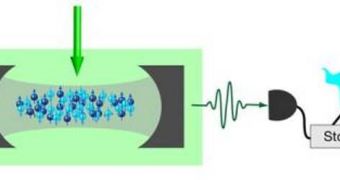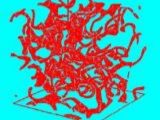In a new study, researchers at the Massachusetts Institute of Technology have managed to accomplish a long-standing goal in quantum network technology, namely the storage of a light beam in a cold atom gas. This will open the way for new types of atomic quantum memory that could store information inside quantum networks in a manner that would not destroy the sensitive data. In a related paper, Brazilian experts have succeeded in successfully controlling the formation of quantum turbulence in a gas made of ultra-cold atoms, a find that may make it easier to explain the phenomenon in non-quantum systems as well.
A quantum network is a quite simple, and yet very complex structure, in which memory devices that store not bits, but quantum states, are interconnected with quantum information processing ones. Once such a network is realized, it may very well set the basis for a quantum Internet, in very many aspects different from the one we know and use today, researchers hope. MIT experts Haruka Tanji, Saikat Ghosh, Jonathan Simon, Benjamin Bloom, and Vladan Vuletic published details of their atomic-ensemble memory in the July 20th issue of the journal Physical Review Letters, as well as in the on-line issue of the journal Physics. The latter is a publication of the American Physical Society.
They explain that, in quantum networks, catching a beam of light, which is necessary for storing information, is much simpler than learning when it has been captured. That is to say, all quantum systems rely on Heisenberg's principle, which states that observing an event at this level has the capacity to destroy it. In other words, if an observer notices it, it disappears. The memory the team devised is able to identify the arbitrary polarization state of a photon moving past it, store the photonic qubit data, and later generate and release a new photon, with the same polarization state.
Because the memory only announces that the qubit has been trapped, and offers no details of its polarization, the Heisenberg principle is not breached, and the quantum system remains stable. The find has applications in macro-scale quantum networks, where knowing if the data has been retrieved is of paramount importance.
In a related paper, also published in Physical Review Letters, Brazilian experts have studied the formation of turbulences in quantum fluids such as superfluid helium and ultracold atom gas. The reason why this is important is because, in these materials, the vortices making up the turbulences do not disappear easily. This happens because the fluids have a zero viscosity. Therefore, studying the seemingly chaotic behavior of turbulences, something that has fascinated physicists for centuries, is now very easy.

 14 DAY TRIAL //
14 DAY TRIAL // 
